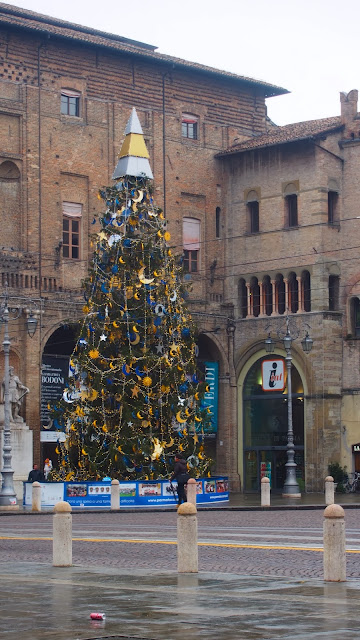Parma: Parmesan, Palazzos, & Pastels
Parma has jumped to the top of my favorite Italian cities list. Not many tourists make a point of visiting, and they should. I found it to be a gorgeous, charming town - albeit a tad confusing to get around. Usually I'm lost with a purpose, but in Parma, I was usually just plain lost.
Parma's roots go all the way back to the Bronze Age; 1500ish BC. It's thought that the first major buildings were constructed on the modern day Piazza del Duomo and Piazza della Macina. Parma was founded by the Etruscans, a powerful force in Italy for centuries before Rome more or less engulfed them into its empire. Most historians speculate that the name Parma came from the Etruscan word for shield; maybe because the original settlement was shaped like a round Etruscan shield, or maybe because of its orientation, which faced north and thus shielded the settlement from the vicious Gauls. The Romans came in around 145 BC and the city was subsequently destroyed, rebuilt, attacked, and repaired numerous times as a part of the Empire until the early Middle Ages, when it was sacked by none other than Attila the Hun. Following this, Parma changed hands a number of times; Germans, Goths, Byzantines each ruled the city for some time. Eventually, the Lombard kingdom of Italy took over.
However, nearly everything you see in Parma today comes from the 13th century AD or later, like the Palazzo della Pilotta. It (like much of Parma's architecture) was built in pale tan brick, which is a welcome change after seeing so much red brick in other Italian cities.
A large destroyed portion showcases the damage that was done by WWI and WWII bombings.

You can stroll through the courtyard where the who's who of royalty used to mingle.
Or wander through the Cortile della Pilotta which used to serve as a grand hall.
Not too far away is the Palazzo del Governatore, which serves as a main town square.
It's a hodgepodge of buildings from various centuries...
... and has recently been taken over by a festive tree.
What made me fall in love with Parma was, surprisingly, not the historical architecture. Rather, it was the regular buildings, apartments, and shops.
Each one is bright and colorful. On their own, some are rather atrocious, but when they're mashed together it somehow works.
Many were various pastel shades, making the city look like a giant easter egg.
Or the new grey brick facade put over an old, brown brick building.
Of course, Parma is full of cheese and meat shops. It's known for its parmesan cheese and prosciutto and there is no shortage of places to sample and buy.
Adding to Parma's charm is its calm. Once you get off a main street, you'll find yourself practically alone. Aside from Varenna on Lake Como, it's the calmest Italian town I've visited.
The best thing about Parma is its plethora of Romanesque churches. But that's another post entirely!
Labels: architecture, cheese, Italy, medieval, parma





























0 Comments:
Post a Comment
Subscribe to Post Comments [Atom]
<< Home